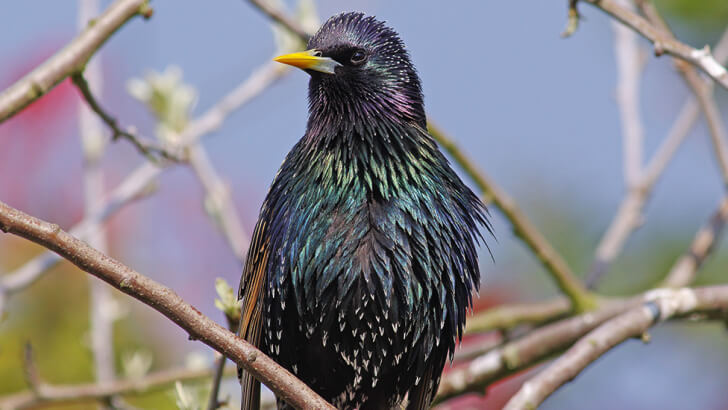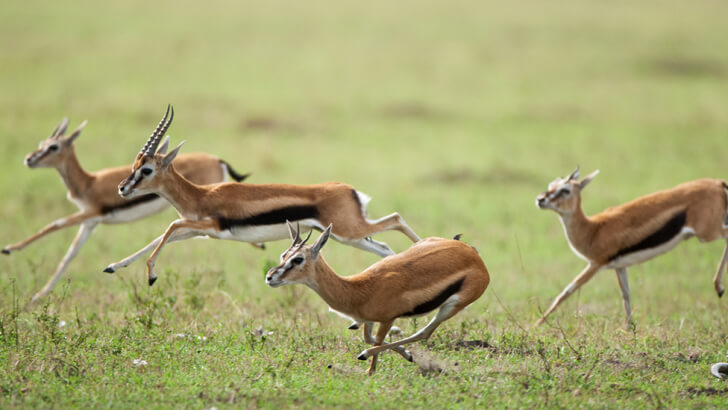BBC Earth newsletter
BBC Earth delivered direct to your inbox
Sign up to receive news, updates and exclusives from BBC Earth and related content from BBC Studios by email.
Oceans
The judges’ votes are in. Who are the top movers and shakers of the animal kingdom?
World Dance Day is held on April 29, and we want to remind everyone that it’s not just humans who know how to groove. Animals of all shapes and sizes do too.
There are many reasons why certain animals shake, wiggle, shimmy and strut. It may be an attempt to impress a mate, to communicate some vital information or even as a mode of transport. It may seem completely unfair, when this reasoning is so varied, to judge these creatures on their apparent dancing abilities, but that’s exactly what we have done. Sit back and marvel at the finest (and not-so-finest) scaled, feathered and furry dancefloor fillers…

Graceful, poetic, sophisticated - this simple life-form that lives throughout the tropical and subtropical waters in the Pacific Ocean restores the dancing reputation of slugs everywhere who, let’s face it, aren’t known for their sweet moves. Once it’s been disturbed from its ocean bed habitat this brightly coloured Spanish dancer (Hexabranchus sanguineus) undulates in a highly attractive fashion, resembling the delightful rhythmic movements of the flamenco masters it’s named after.
The remarkable mudskipper (Boleophthalmus pectinirostris) lives, as the name suggests, in the soggy areas along the shorelines of Japan. Despite its fishy qualities, it spends around 90% of its time out of the water and wallowing around in the muck and filth. It’s camouflaged to blend in with its unsightly surroundings, so when mating season comes around, it has to do something drastic to attract a partner. This involves a dance. Well, it’s less of a dance as a leap in the air followed by a belly flop, similar to an unsuccessful stage dive or something annoying that may be attempted in a mosh pit.

Few animals dance for pleasure. In fact, in strictly scientific terms, adhering to the definition of what dancing is, barely any animals actually do it. According to one study there are only two creatures that move to the beat of a song and will change the way they move if the rhythm alters. One, surprisingly, is the elephant and the other is the cockatoo (Cacatua galerita eleonora). The grooving skills of the cockatoo were revealed when a bird called Snowball was witnessed on YouTube getting down to a Backstreet Boys classic. A scientific study revealed that Snowball was successfully on the beat about 25% of the time - about the same as a drunk uncle on the dance floor of a wedding.

Surely the most painful, damaging and desperate dance, if it can even be considered a dance, is the ritual humiliation of the conga line. Whether it’s at the office Christmas party or around the deck of a cruise ship, there’s nothing worse than being forced into grabbing the hips of a complete stranger and occasionally wafting a leg in the air accompanied by a strangulated cry. And yet this is what shrews (Sorex araneus) have decided to do. These tiny mammals have been observed in long trains or caravans, one behind the other. Okay, so it’s actually the baby shrews following behind their mother for protection against predators - but still. There’s really no excuse for it.

Yes, we all know it’s easy and fun to get out there on the dancefloor and flap your limbs around in time to the music on your own like some demented lawn sprinkler. What’s far trickier is learning and mastering a dance routine with many others, all moving as if encased in one body. But that’s exactly what starlings have managed to do, sweeping across the skies majestically, totally synchronised, in a phenomena known as murmuration. Thousands of starlings (Sturnus vulgaris) swoop and shimmy in the air in a breathtaking display. It’s thought it occurs as a protection against predators or possibly to exchange information about feeding sites or to keep warm in the chilly evenings. Whatever the reason, their astonishing efforts resemble the best air ballet you’re ever likely to witness.

There are many elements to dancing. Precision, rhythm, dexterity. But there’s always one isn’t there? One dance floor resident who takes it all a bit too seriously. Whose moves are a bit too rehearsed, a bit too refined. It’s not about having fun with them, it’s some kind of biological display of superiority. Which is exactly what the Thomson's gazelle (Eudorcas thomsonii) exudes when it undertakes a behaviour known as ‘stotting’. Basically a stot is a smug prance, which the animal employs to show a chasing predator that it’s fit and healthy and the chaser has no chance of catching them. It’s a flounce that seems overly full of itself - even though the creature’s life depends on it. It all feels a little Riverdance - if you know what I mean.